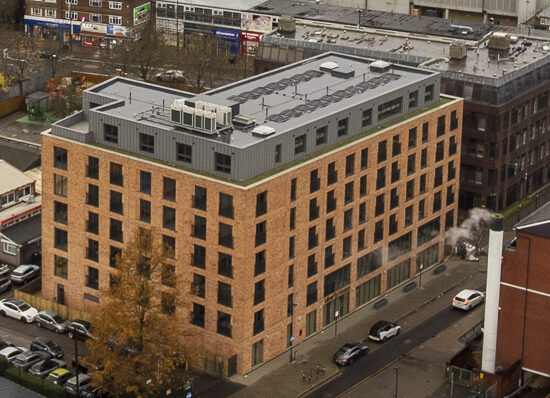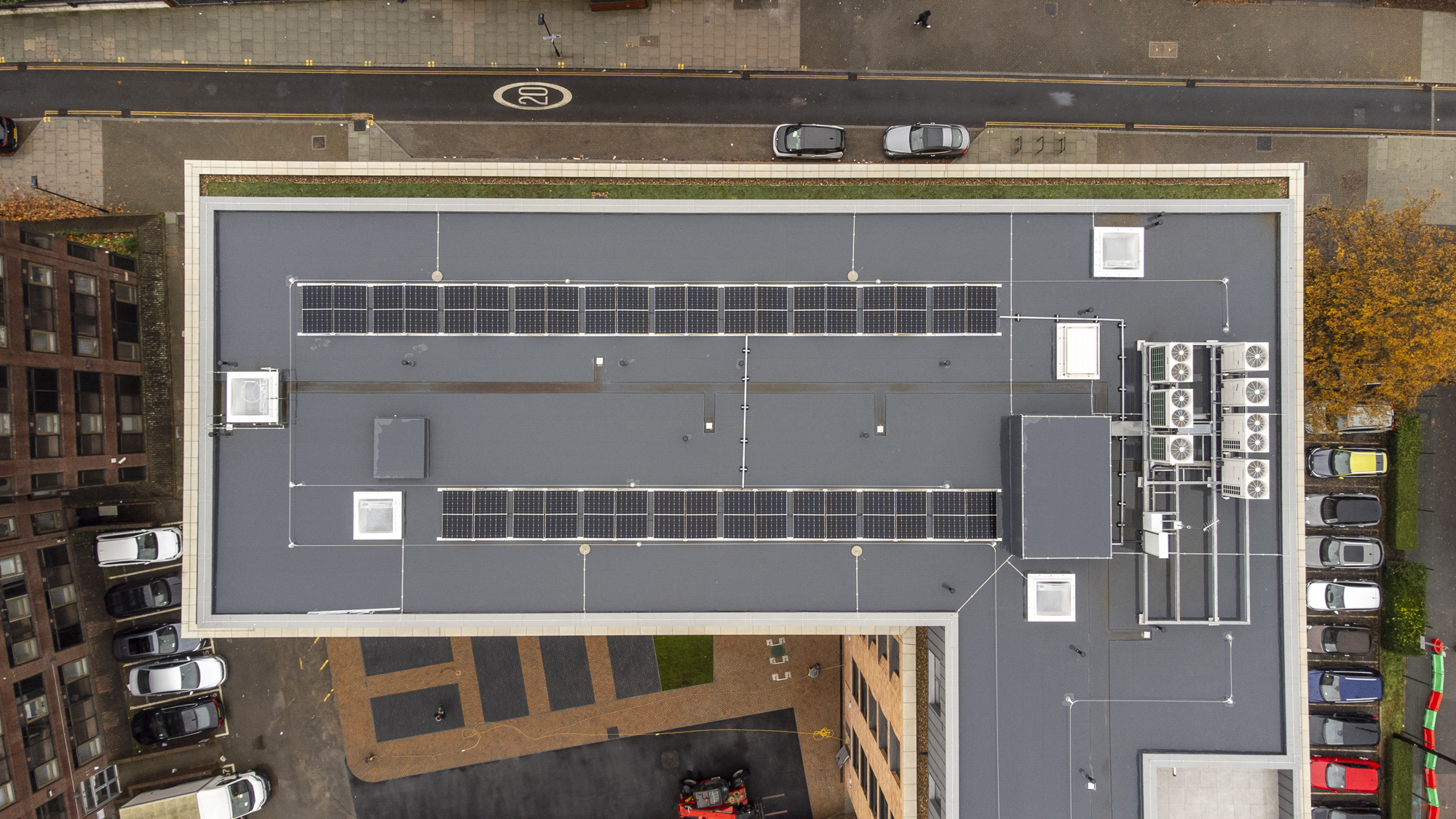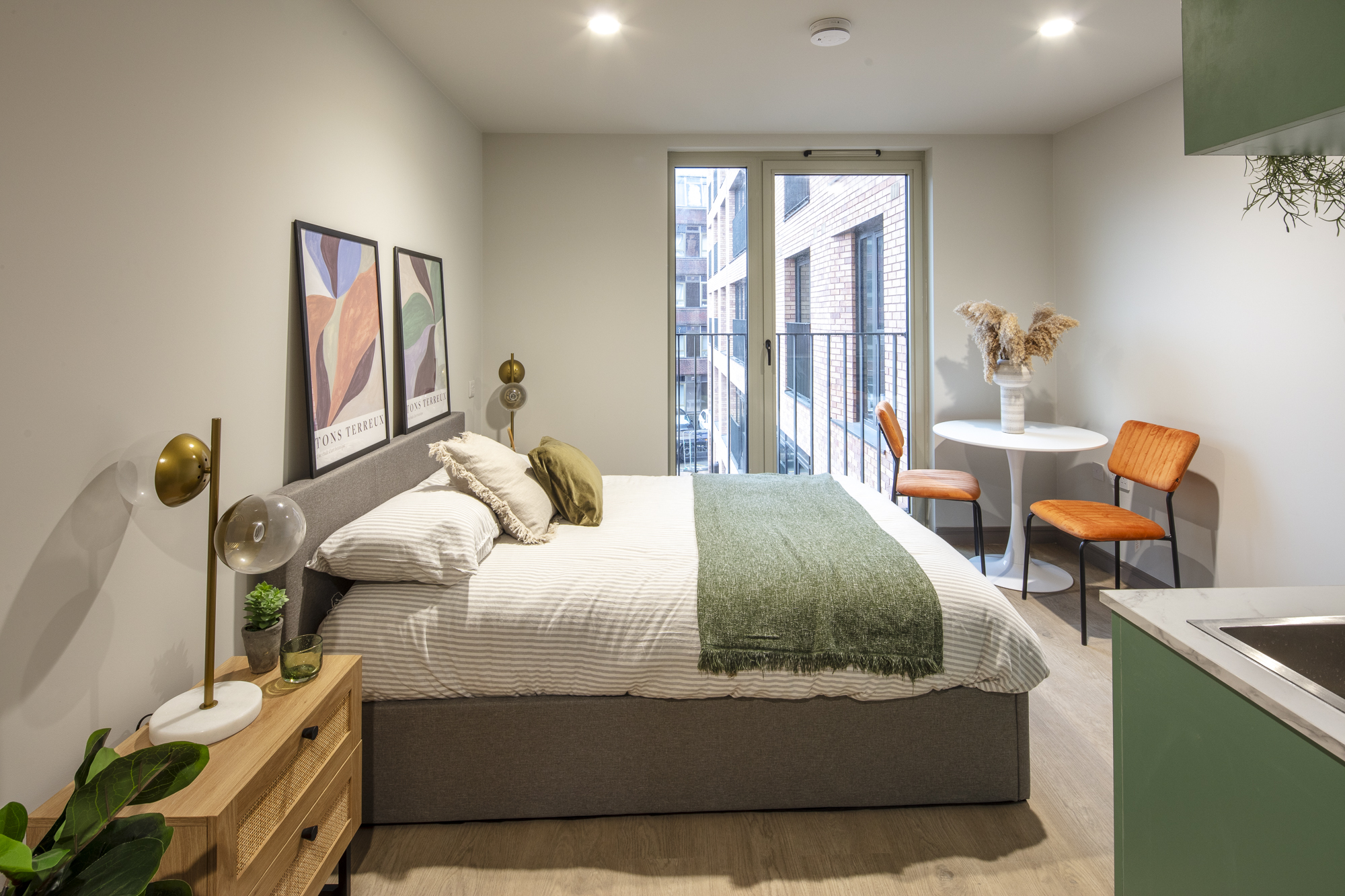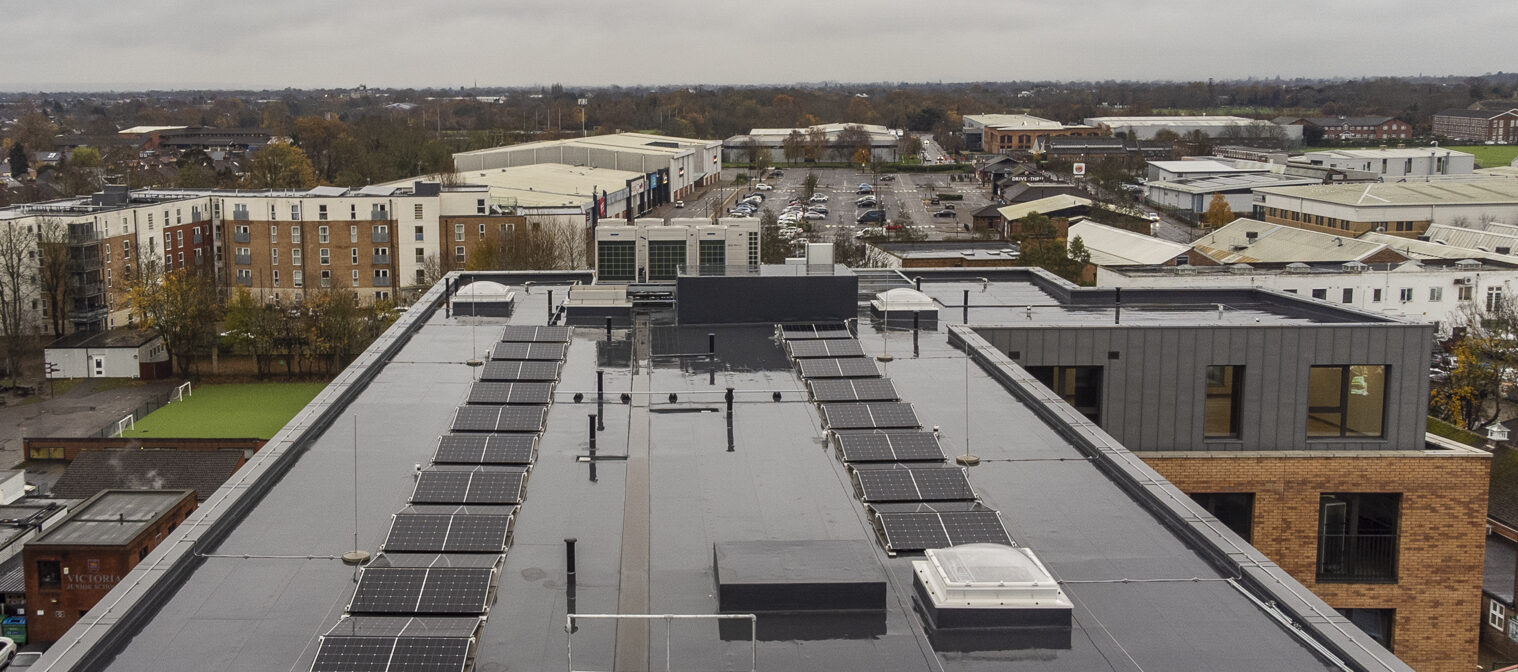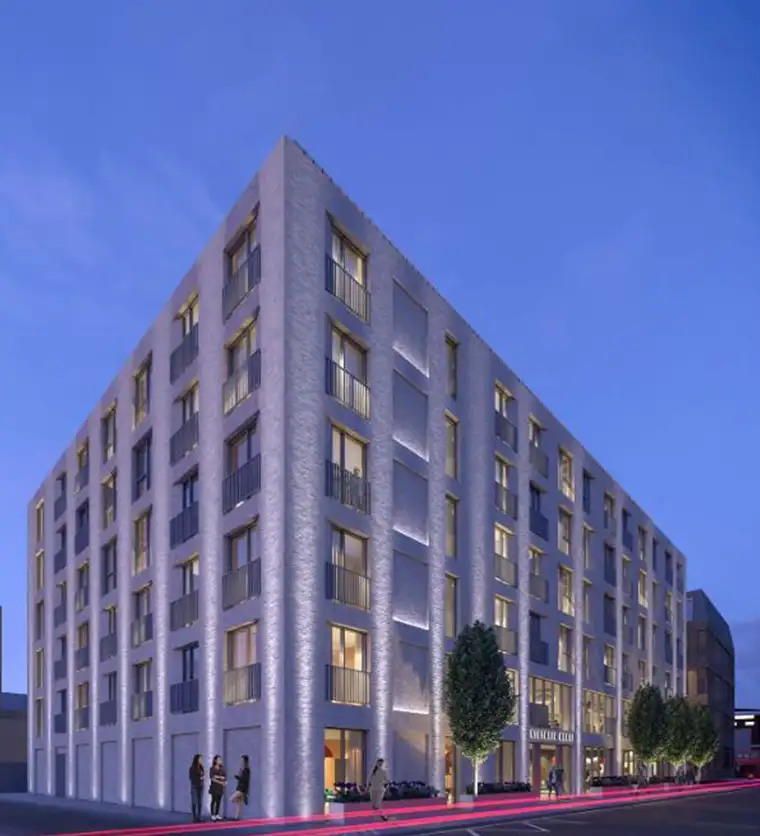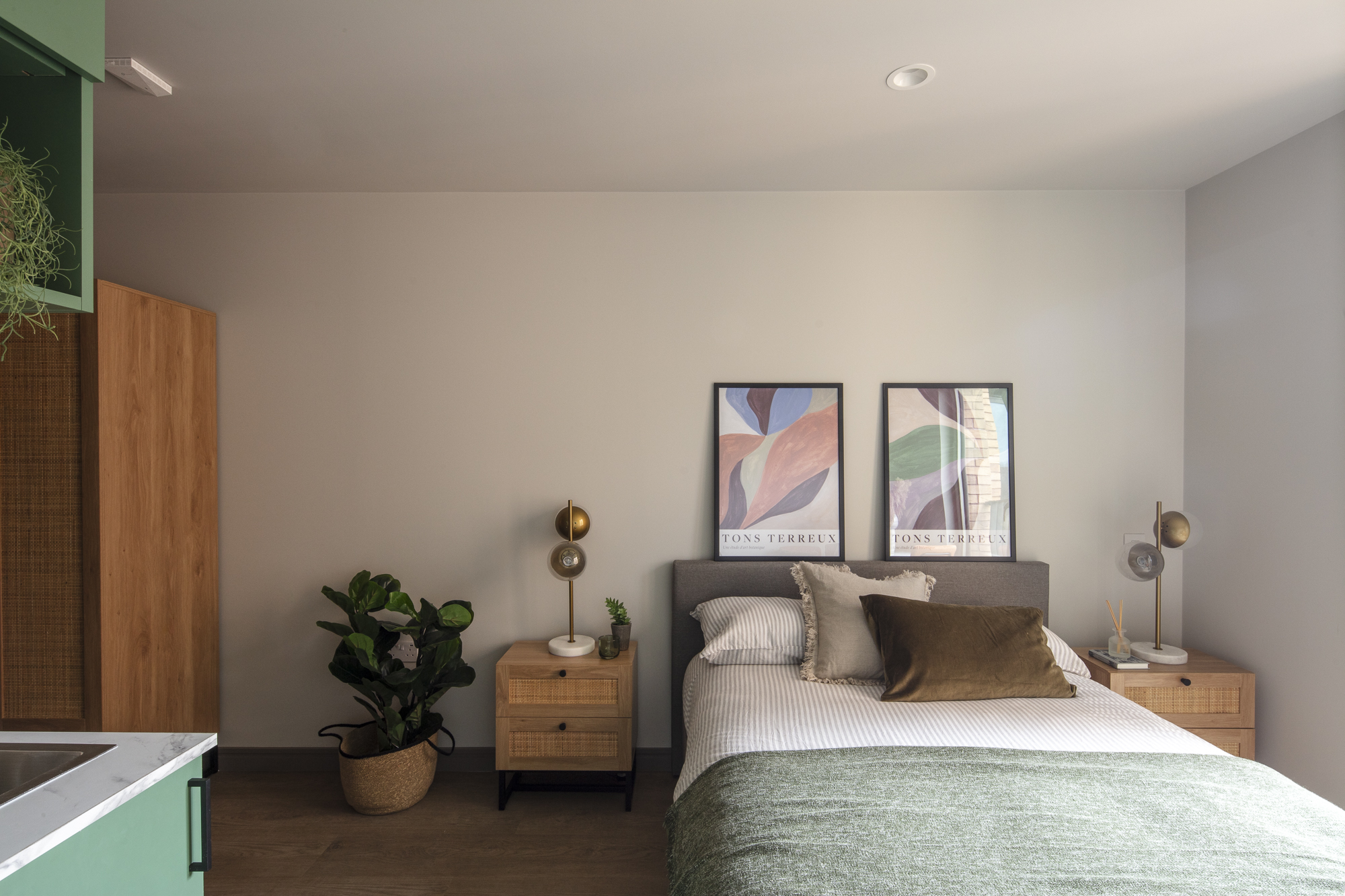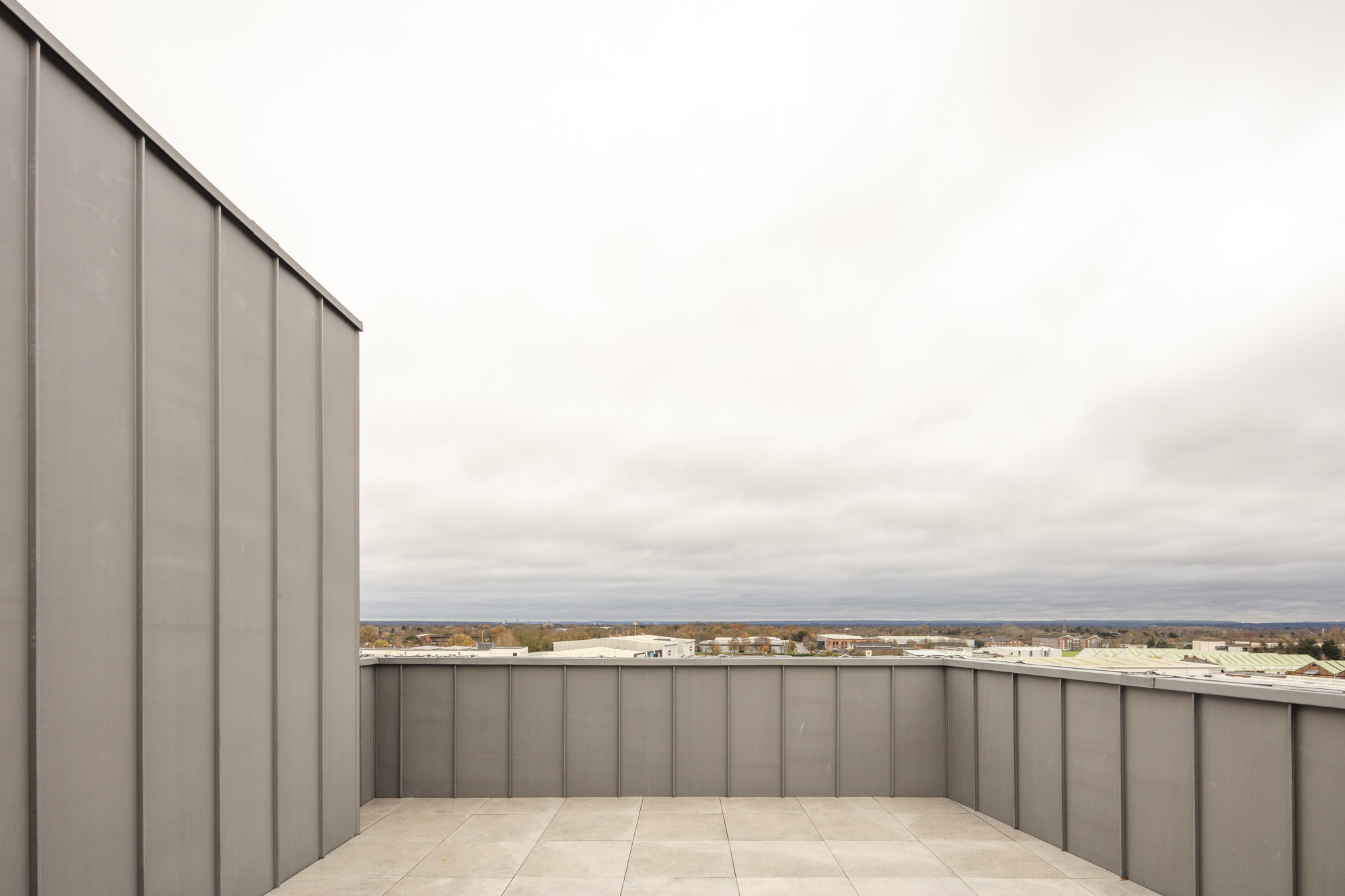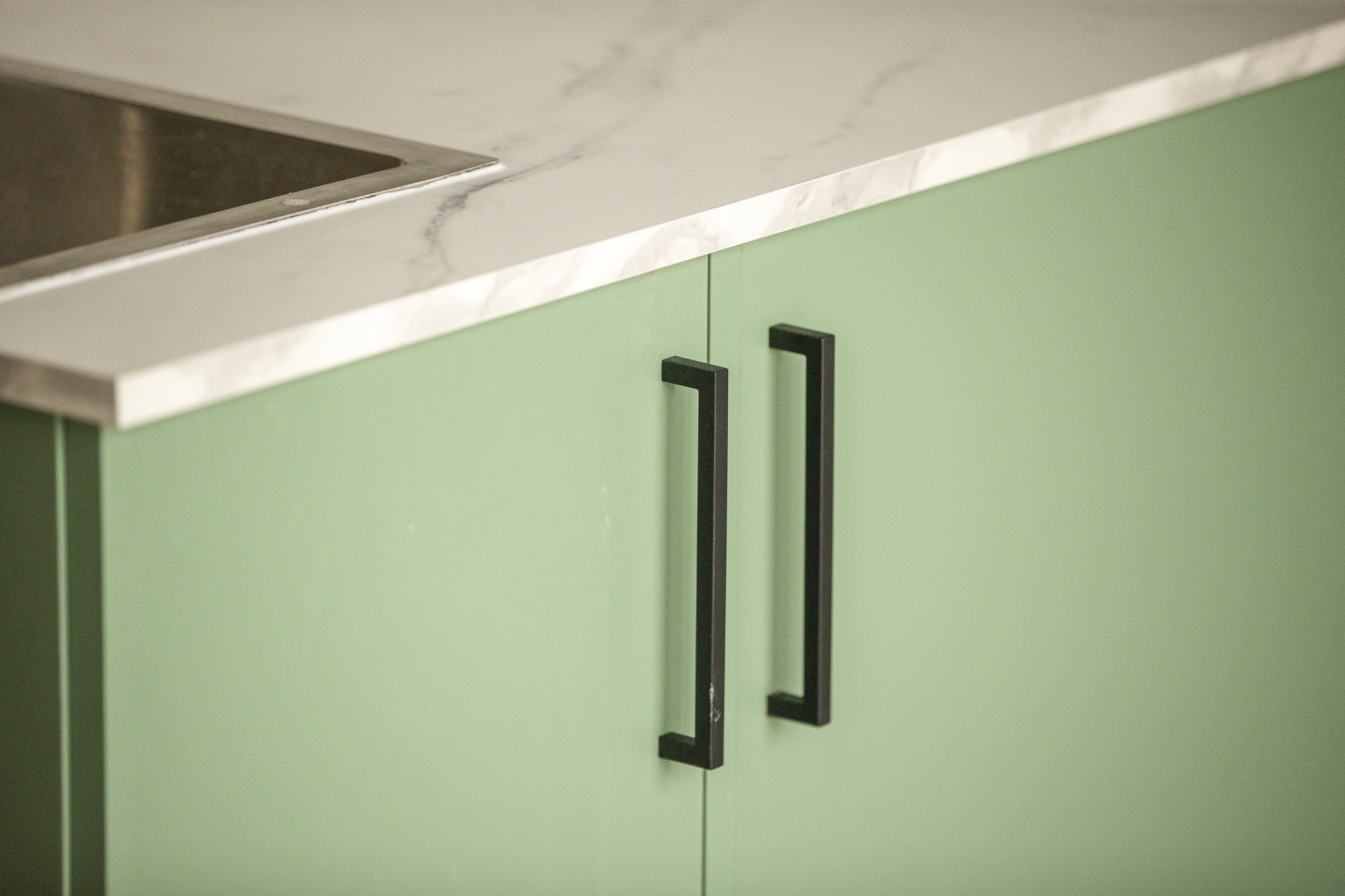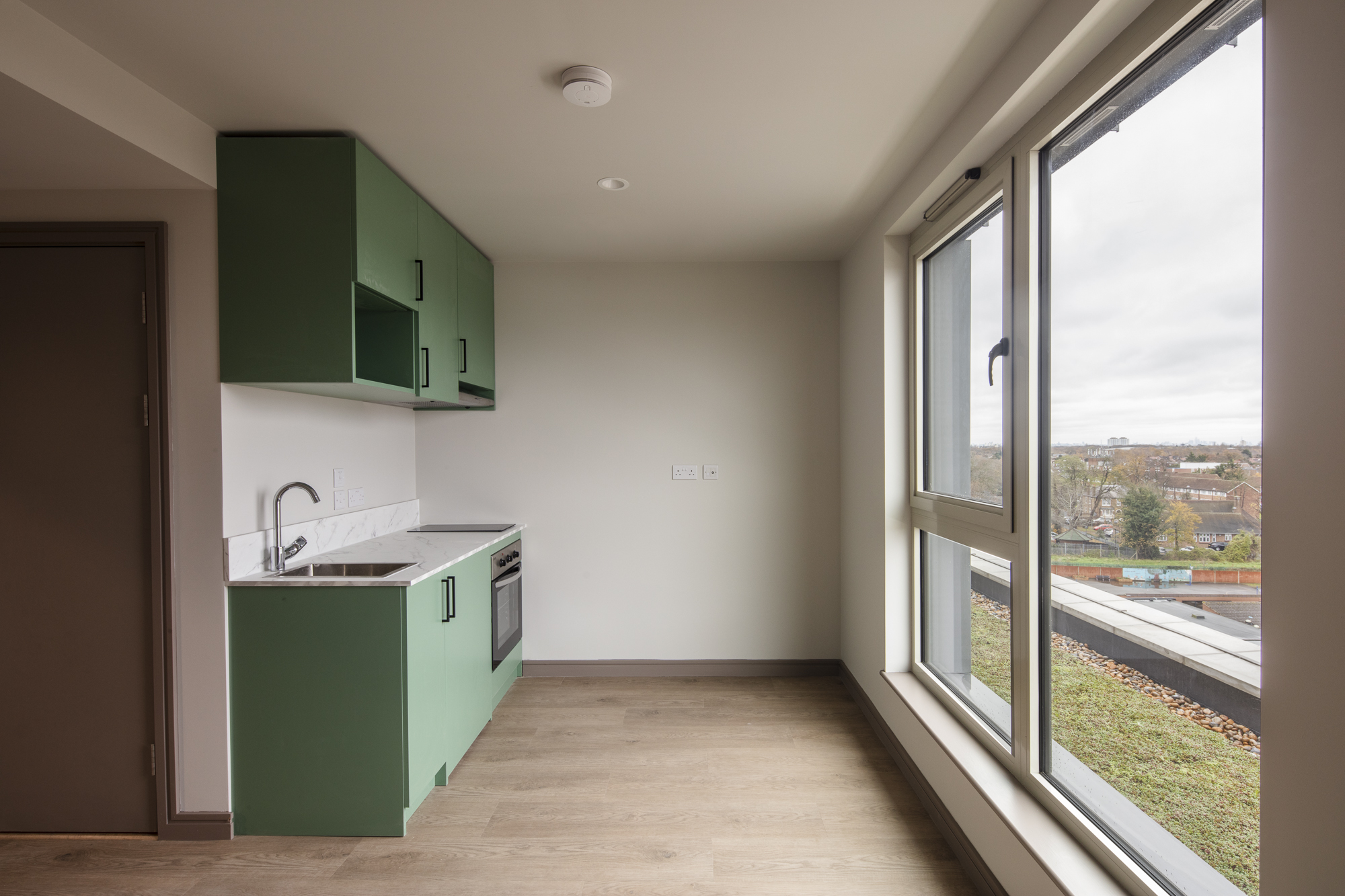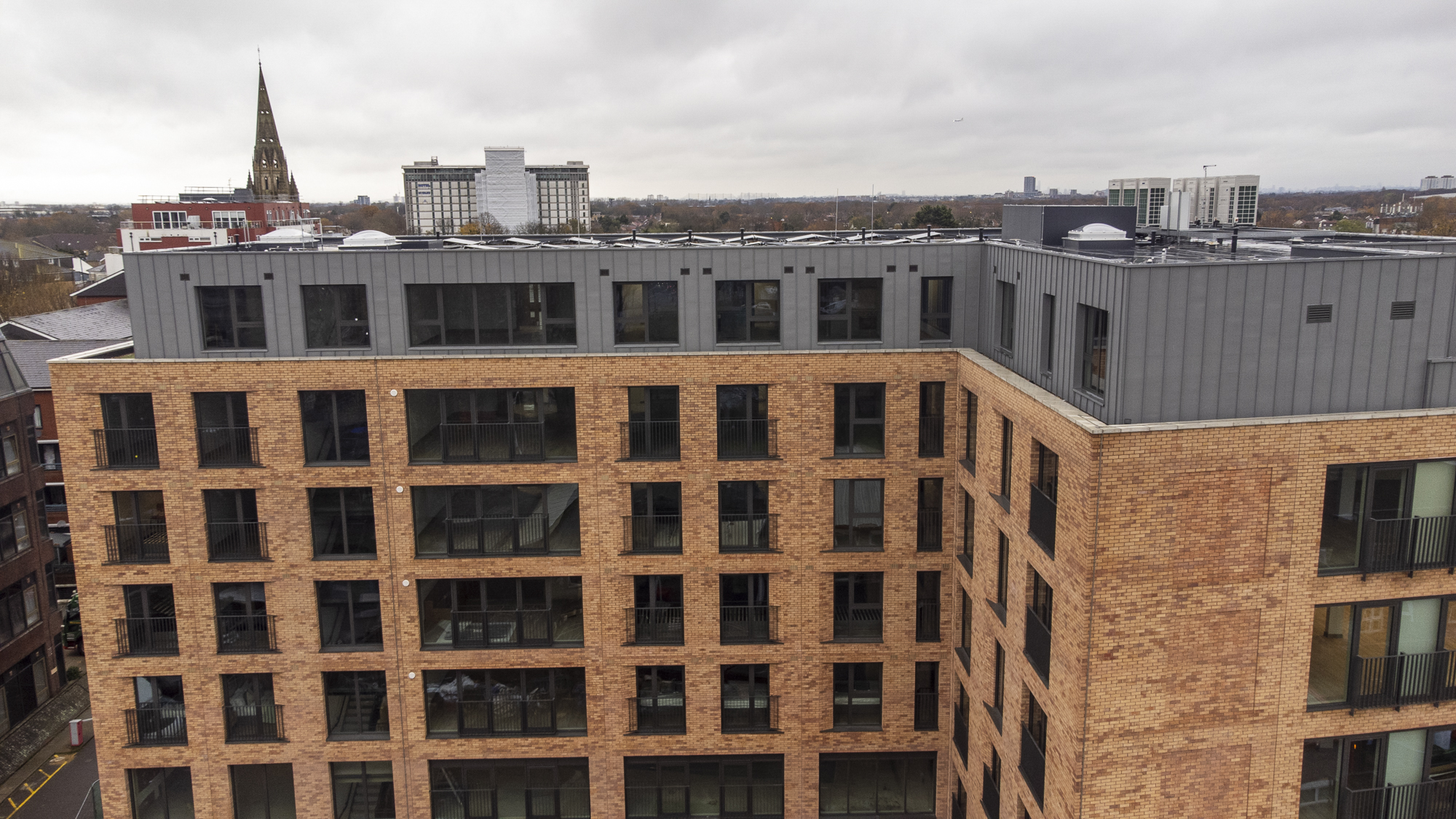Feltham
The construction of a new co-living building is underway, with a unique approach to sustainability and environmental responsibility. Using modular construction, the building will consist of 128 separate apartments, each with its own unique design and layout. As well as the individual units the project will boast co working spaces, bike stores and workshop, retail spaces on the ground floor and a large communal external area and garden.
The modular construction process allows for a faster build time, with less waste and lower costs than traditional construction methods. All components of the building, from steel core to the facades will be manufactured by MY-Fab’s teams.
In addition to the efficiency of the build, the co-living building is also designed with environmental credits in mind. The building will feature a range of sustainable features, including solar panels, rainwater harvesting, and energy-efficient appliances.
Each of the 128 apartments will be optimized for shared living, with open-plan living areas, shared kitchens, and a range of communal spaces. This innovative approach to shared living is designed to foster a strong sense of community and social interaction among residents.
Overall, the construction of this co-living building represents a new and exciting approach to sustainable living, combining modular construction with innovative design and environmental responsibility.
Using MY-Fab’s structural volumetric modules, Victoria House will see 128 self-sustained co-living units, along with co working spaces, bike stores and workshop, retail spaces on the ground floor and a large communal external area and garden.
Comprised of over 300 modules, this is another excellent example of MY-Fab’s system’s flexibility. Victoria House provides excellent quality living spaces that are both sustainable and affordable, designed meet the needs of the residents, with communal areas that promote social interaction and individual living spaces that offer comfort and privacy. MY-Fab’s use of sustainable materials and energy-efficient systems ensures that the project has a low carbon footprint, contributing to environmental conservation efforts.

